Baby’s First Laugh Ceremony: A Joyful Navajo Tradition of Celebrating Family
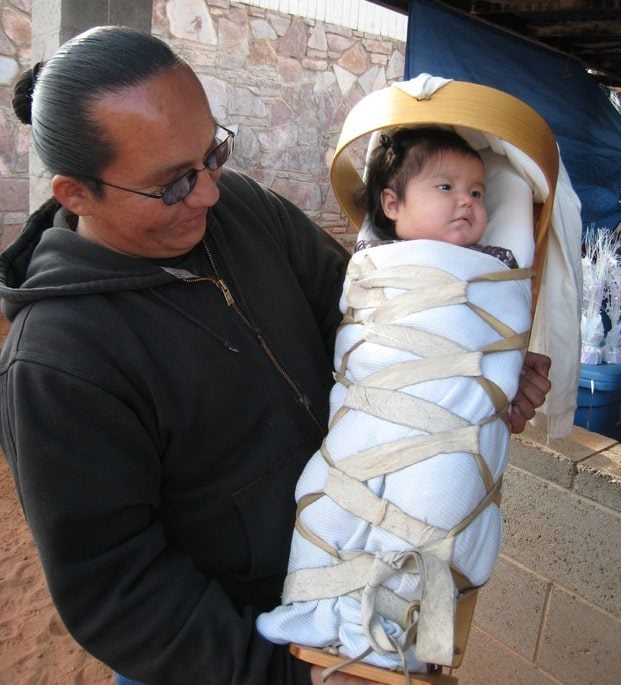
A baby is carried in a traditional Navajo cradleboard. (Source)
Updated August 19, 2024
April 29, 2019 ~ By Shari Rose
In Navajo tradition, the First Laugh Ceremony welcomes a new baby into the family with a joyful celebration centered on generosity
When a baby laughs for the first time, it is no doubt an unforgettable moment for family members who are lucky enough to be present for the giggle. A baby’s first laugh is a joyful and perhaps even reassuring sign to parents and family that this child is healthy, happy, and on the right track toward enjoying a fulfilling life. In sacred Navajo tradition, a baby’s first laugh demonstrates their readiness and willingness to fully join their families in this physical life.
Cultures around the world mark this milestone in different ways, often with ceremonies, blessings, or parties. The Navajo people celebrate a baby’s first laugh with a special family party, called the First Laugh Ceremony (A’wee Chi’deedloh). In tradition, it is believed that the first time a Navajo baby laughs, the child is transcending their spiritual existence to live with their family in the physical world.
- The Meaning of a Baby’s First Laugh in Navajo Tradition
- What Happens During a First Laugh Ceremony
- Conclusion
The Meaning of a Baby’s First Laugh in Navajo Tradition
The Navajo, or Diné, believe that newborn babies initially reside in the world of the Diyin Dine’e, the Holy People, before they can join their earthly families. The Diyin Dine’e are the first people and the subjects of the most important myths and stories in Navajo culture. When a baby is born, the Navajo believe the child lives among the Holy People, until the first time the baby laughs.
As Navajo historian Wally Brown explains, the spiral of hair that grows on a baby’s head, what he calls the “continual growth direction,” is a divine marking that shows where the spirit entered the body.
“When we enter this physical body, we have the spiral right here at the top of the head where the spirit entered,” Brown says. “And when that spirit entered, we let out that cry. The spiral markings are also found on the fingertips … and these are our identification markings.”
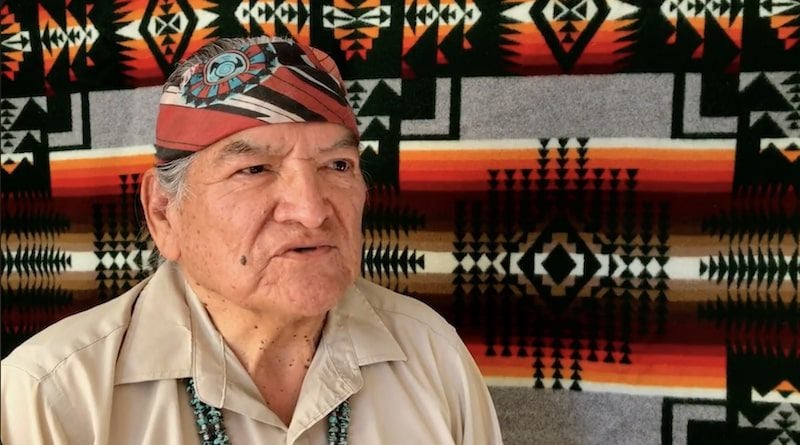
Navajo historian Wally Brown explains the spiritual meaning of a baby’s first laugh in tradition and emphasizes the importance of celebrating happiness during the First Laugh Ceremony. (Source)
He explains the important role that families have in teaching their children how to lead generous, joyful lives, and it begins with learning to laugh with them.
“In this world, of course, we celebrate birth and we celebrate that first laugh because it is a very unique experience,” says Brown. “It is something that has to be learned. Joy and happiness does not just happen, and so it is that we celebrate it when the baby gives the first laugh.”
To properly celebrate this jubilant and sacred Navajo milestone, the baby’s family invites loved ones from near and far to attend the First Laugh Ceremony at home.
- More stories: Baek-il: Celebrating a Baby’s First 100 Days in Korean Culture
- More stories: Jovita Idár’s Fight for Mexican-American Rights in Texas
What Happens During a Navajo First Laugh Ceremony
Because of the significance that a baby’s first laugh holds in Navajo tradition, family members watch, wait, and listen intently to hear that initial little giggle. Parents, siblings, grandparents, and just about any family member will try their best to get that first laugh, from making silly faces to tickling and everything in between. And when that baby finally laughs, it’s time to celebrate the journey to their earthly family and welcome this new life into the community with the First Laugh Ceremony.
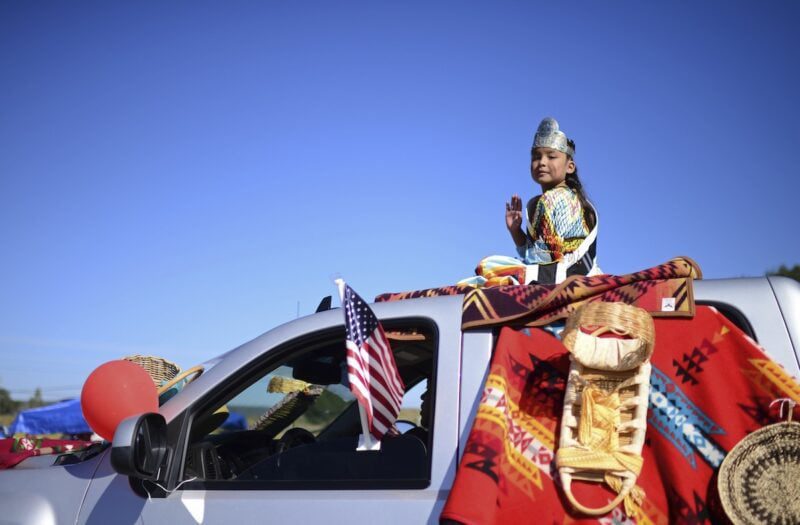
A child waves at the Navajo Nation Fair, a world-renowned event that showcases Navajo agriculture, fine arts and crafts, with the promotion and preservation of the Navajo heritage in Window Rock, AZ. (Nano Calvo via AP Images)
The lucky family member who caused the baby to laugh plays a very special role in the party. They are honored as the organizer of A’wee Chi’deedloh, the First Laugh Ceremony. Laughing is a crucial step in fully embracing the meaning of k’é (kinship) among one’s own people. So, when a baby laughs for the first time, they are telling loved ones that they, too, want to love and be loved.
The Navajo’s First Laugh Ceremony is usually held within a week or so of the first time a baby laughs. The baby’s parents and the family member, friend, or neighbor who inspired the child’s first laugh start planning for the party immediately, preparing food, inviting family and friends, and crafting gift bags for each guest.
- More stories: America Has The Highest Maternal Mortality Rate Among Western Nations
- More stories: Xóchitl Guadalupe Cruz López: How Child Inventor Changes Lives
During a Navajo First Laugh Ceremony, the baby is considered the host. With the help of their parents, the baby ceremonially gives each guest a plate of food, rock salt and a gift bag of goodies, as tradition holds. The Navajo place great value on generosity as a virtue, and this first act of generosity during a First Laugh party teaches this important lesson early. Wally Brown explains further:
“When we celebrate [the First Laugh], we give out salt. Back in the old days, salt was very difficult to find. It was a valued trade item, and so we give the salt, it is to encourage the child as they grow into adulthood that they remain generous with their laughter, with their joy and with their happiness. And that they will bring joy and happiness to other people,” says the Navajo historian.
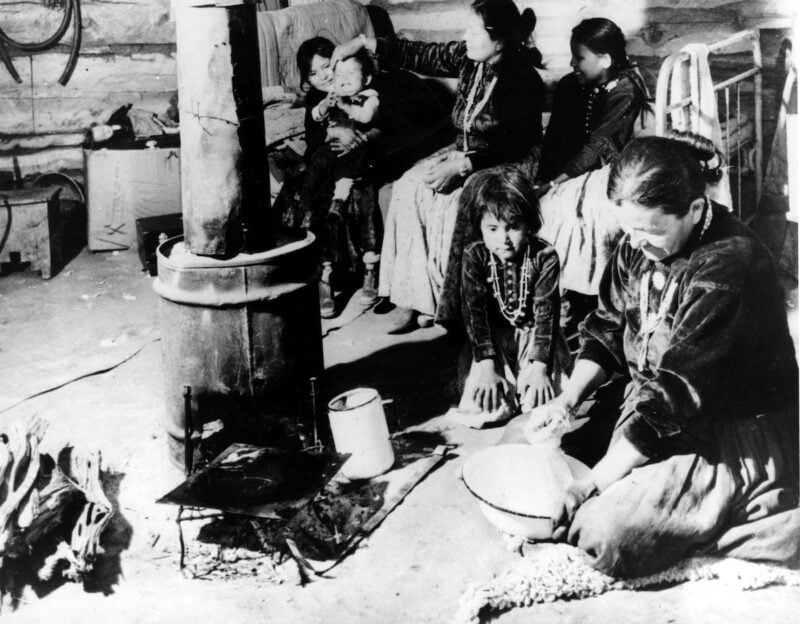
A Navajo family prepares a meal and cares for the young children in their home in 1945. (AP Photo)
In addition, by presenting a meal and small gifts to all those who attended, the baby symbolically pays respect to their family, both in the physical and spiritual worlds.
Conclusion
Like other cultures throughout the world, the Navajo celebrate a baby’s first laugh as a deeply spiritual sign in the child’s life. The act of passing through the spirit world where the Diyin Dine’e reside and into the physical world to be with one’s family and larger community is a sacred and jubilant event. The Navajo First Laugh Ceremony is a celebration of life, family, and above all, love. Welcome, baby!





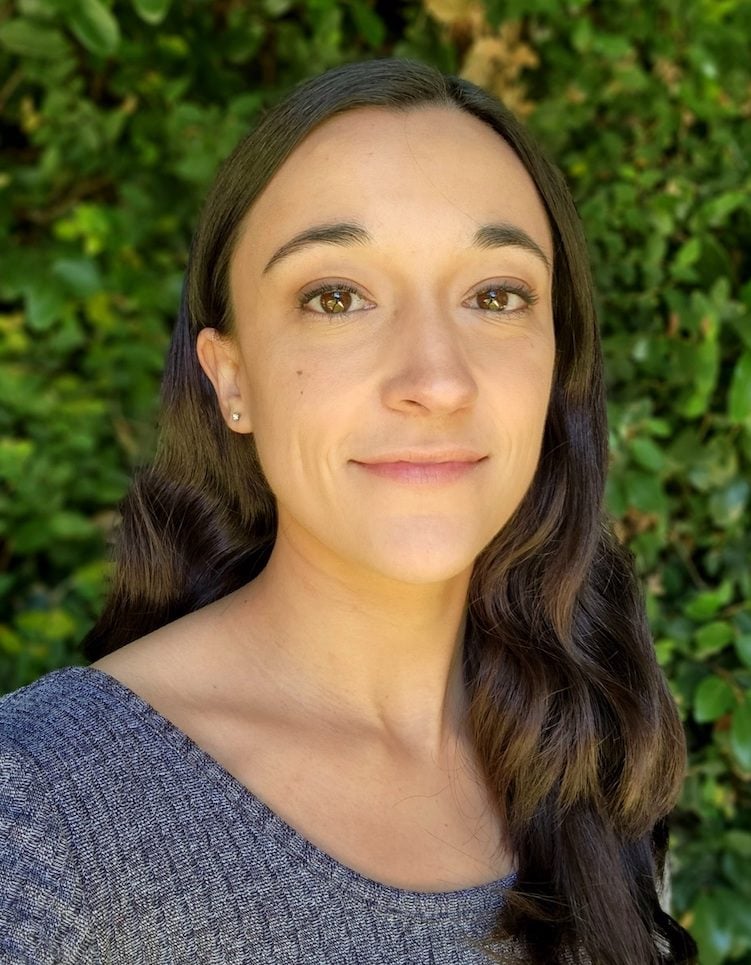
This is pretty great post. I´ve.
Best regards,
Lunding Griffin